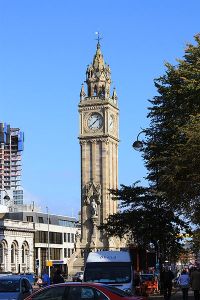Titanic Belfast day tours from Dublin
 Titanic Belfast day tour from Dublin, book your seat now the Full story in nine galleries: The dramatic £90 million ($134 million) Titanic Belfast visitor attraction opens shortly.
Titanic Belfast day tour from Dublin, book your seat now the Full story in nine galleries: The dramatic £90 million ($134 million) Titanic Belfast visitor attraction opens shortly.
Here is a preview of what’s inside: it’s more of a journey than a set of displays. The story starts in the first gallery with 1912 “boomtown Belfast” and takes you in a caged lift to the fourth floor for an atmospheric six-minute cart ride through the shipyards. The third gallery is based around a glass apex with a film projection re-creating the completed Titanic on the slipways outside. It launches into dry dock for fit out, with depictions of the first-, second- and third-class cabins in the next gallery.
The cave section is a journey through the bowels of the ship, projected on the walls. Gallery five is based on the ship’s maiden voyage and re-creates life on board. In the next gallery, the walls narrow and the temperature drops as we trace the timeline of the sinking from iceberg collision to final gasp of air on April 15. The British and American inquiries into the disaster follow in the next gallery.
The final two galleries are just as evocative, devoted to the legends of the ship, with touchscreen displays of Titanic folklore and a voyage to the Nova Scotia seabed where the wreck now lies, using film footage of an ocean dive in 1985. An Ocean Exploration Centre, developed with marine biologists, completes a memorable visit.

